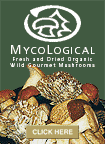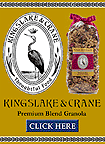
|
 Winner
& National Champion: Anna Maria Garoscio One of two
Female Contestants.
Winner
& National Champion: Anna Maria Garoscio One of two
Female Contestants. |
Dolce
Elba toppings: Puree of Watercress, Pesto, Valeriana,
Pine Nuts and Black Olives |
|
The
winner and national champion is a self-effacing youthful
Ligurian grandmother, Anna Maria Garoscio,
one of only two female contestants. Her Tavernetta “La
Rampa” is located in Via Barberis Colomba, 18035
Dolceacqua, (Imperia), tel. 011-39-0184- 206198, closed Monday.
She garnished her “Dolce Elba”
with purée of watercress, pesto, valeriana, pine-nuts,
and black olives.
Long Before Elba
Although pizza was almost certainly born
more than 3,000 years ago in ancient Egypt, etymologists believe
the term “pizza” is derived from an old Italian
word meaning “a point”, which in turn led to the
modern Italian word pizzicare, meaning “to pinch”
or “to pluck”. This word appears for the first time
in a Neapolitan dialect as early as the year 997 at Gaeta, a
port between Rome and Naples, and refers, perhaps, to the manner
in which the hot pie is plucked from the brick oven.
Pizza, made with flour, yeast, salt and water, has obvious analogies
in Greek and Middle Eastern pita and flat, seasoned yeast breads
like Moroccan Khboz Bishemar, but it is definitely the single
food most firmly associated with Naples. The first documented
pizzas were eaten in ancient Pompeii and Herculaneum, where
archaeologists have uncovered brick pizzas ovens. But it was
pizza without tomatoes, for, of course, 1,500 years had to elapse
before the first tomato would be seen in Europe, when, according
to local legend, Neapolitan sailors brought the first seeds
back from Peru.
Although the tomato was held in low esteem by most Europeans,
the poor people of Naples, subsisting quite literally on their
daily bread, added this new ingredient to their yeast dough
and created the first simple pizza, which they ate with their
hands. By the seventeenth century it had achieved a notoriety
among visitors who would go to poor neighborhoods to taste this
peasant dish made by “pizzaioli” (pizza makers),
but it still remained a local dish. Another appassionato was
Ferdinand IV (1751-1825), the conservative and reactionary King
of Naples and of the Two Sicilies, who liked to go incognito
to savor pizza in the Salita Santa Teresa. To give his bride,
the Austrian princess Marie Caroline, sister of Marie Antoniette,
a taste, he invited the famous pizzaiolo Armando Testa to Court.
Testa’s pizza was such a success that the king wanted
to honor him, but the only recognition Testa wanted was to be
called Monsù, like the French chefs at Court.
Also, it was not until the nineteenth century—about three
hundred years after the tomato—that mozzarella cheese
(made from buffalo, not cow’s, milk) became a standard
pizza ingredient. Legend has it that the famous Neapolitan pizzaiolo
Raffaele Esposito of the Pizzeria di Pietro (or maybe his wife
Pasqualina Brandi) was the first to make the mozzarella, basil,
and tomato pizza in honor of the visit to Naples on November
6, 1889 of Italy’s Queen Margherita. Thinking that the
commonly-used seasoning of bad-smelling garlic was unworthy
of royalty, he replaced it with mozzarella. This dish, thereafter
pizza Margherita or tricolore (after the three colors of the
toppings and of the Italian flag), became very popular immediately.
The other truly genuine, yet older (thus sometimes called “the
queen mother”), Neapolitan pizza is called marinara either
because it was the first food fisherman ate on return from their
catch or because its toppings of oil, tomato, garlic and oregano
could be stowed on voyages so that sailors (marinai) of this
seafaring city could make pizza away from home.


















